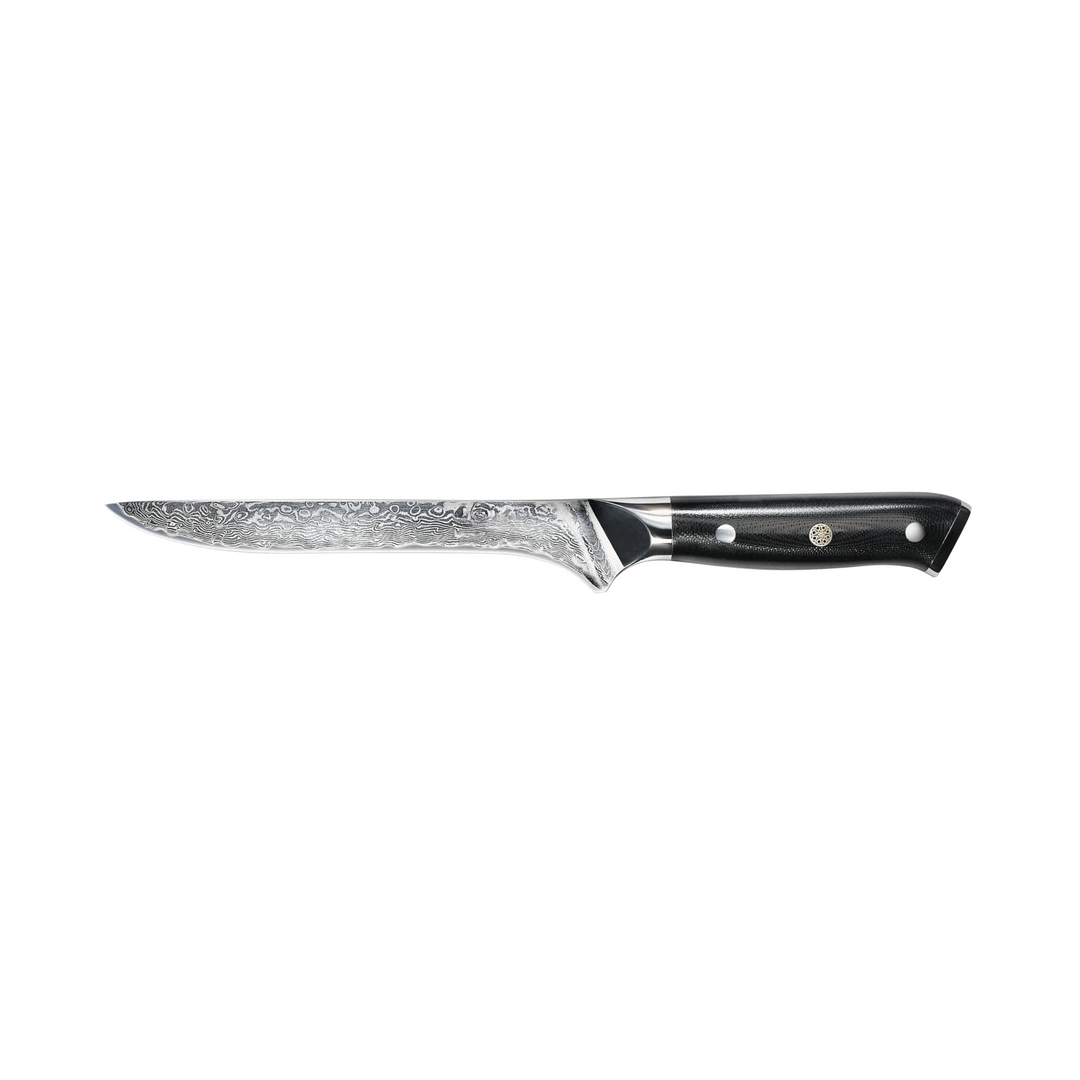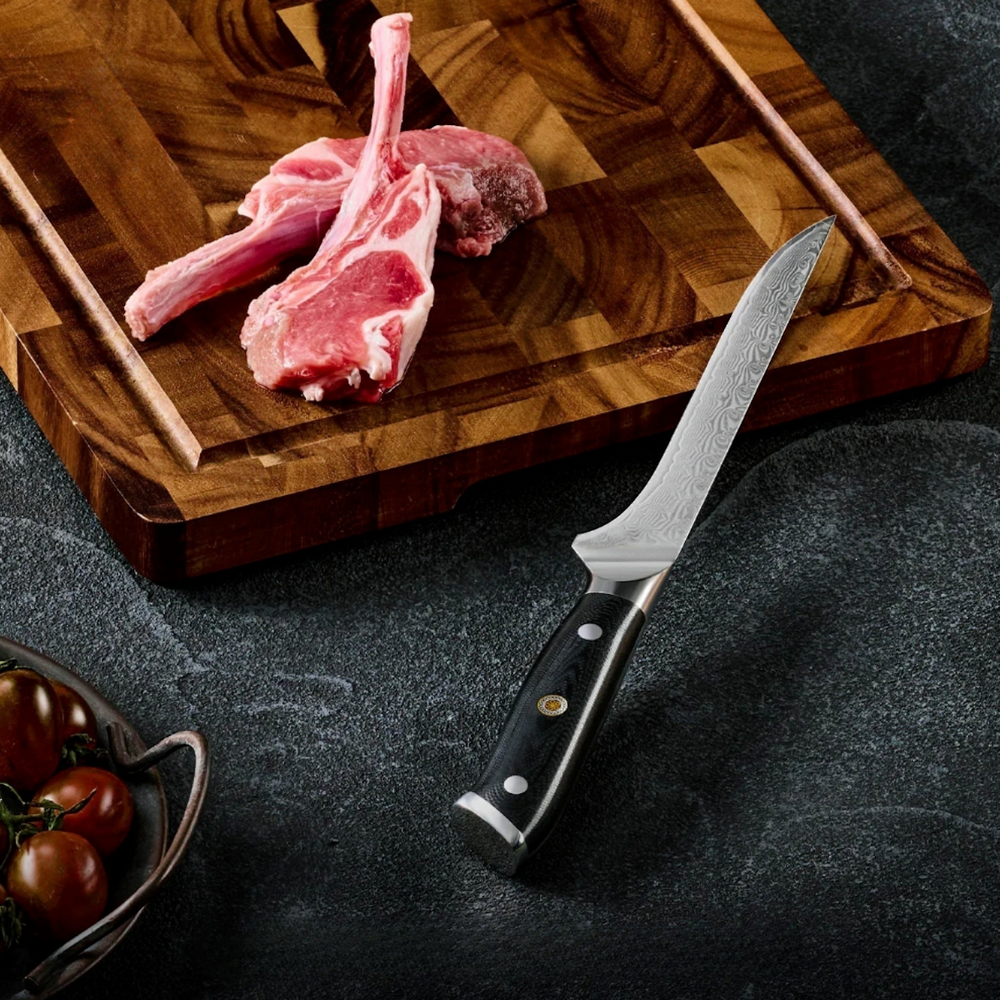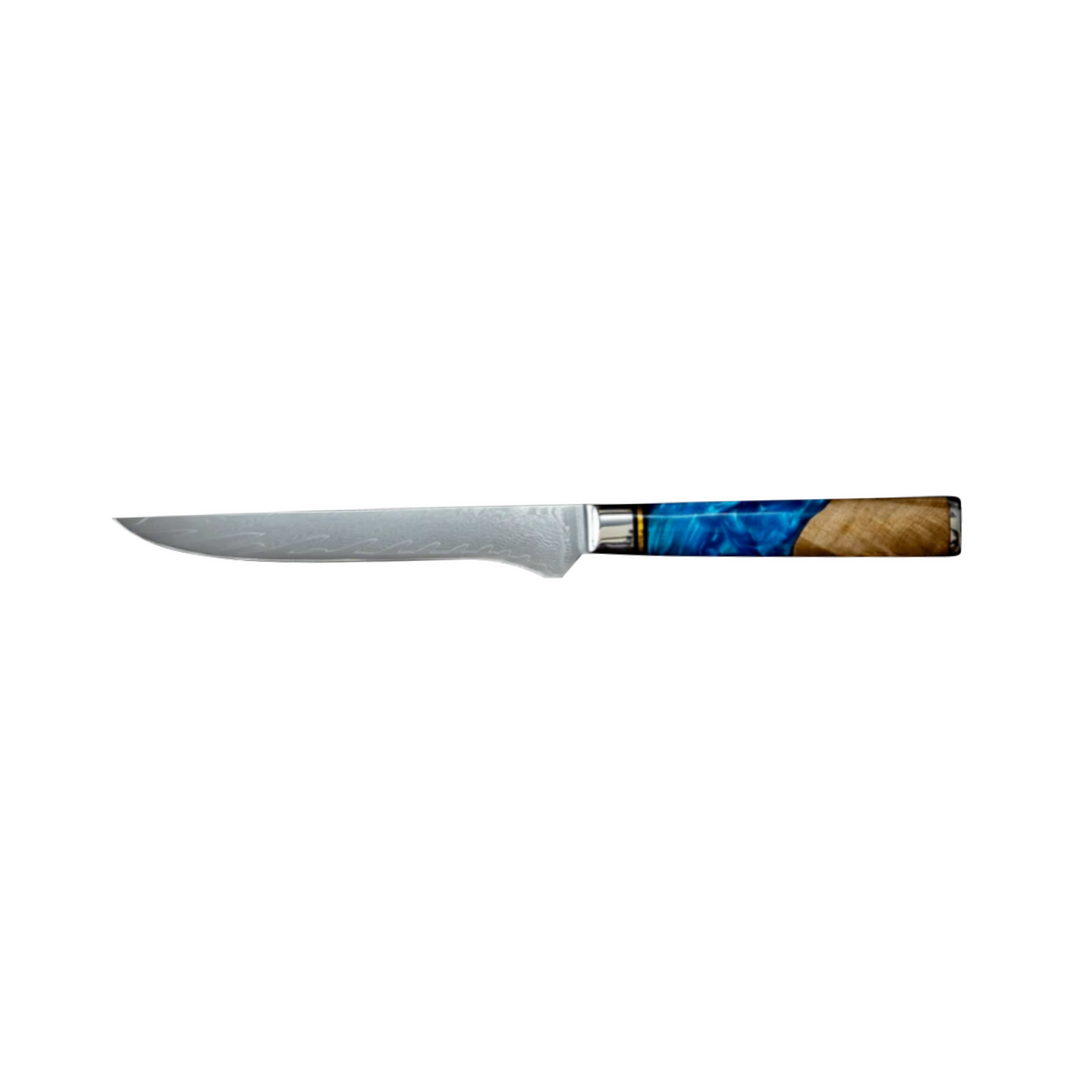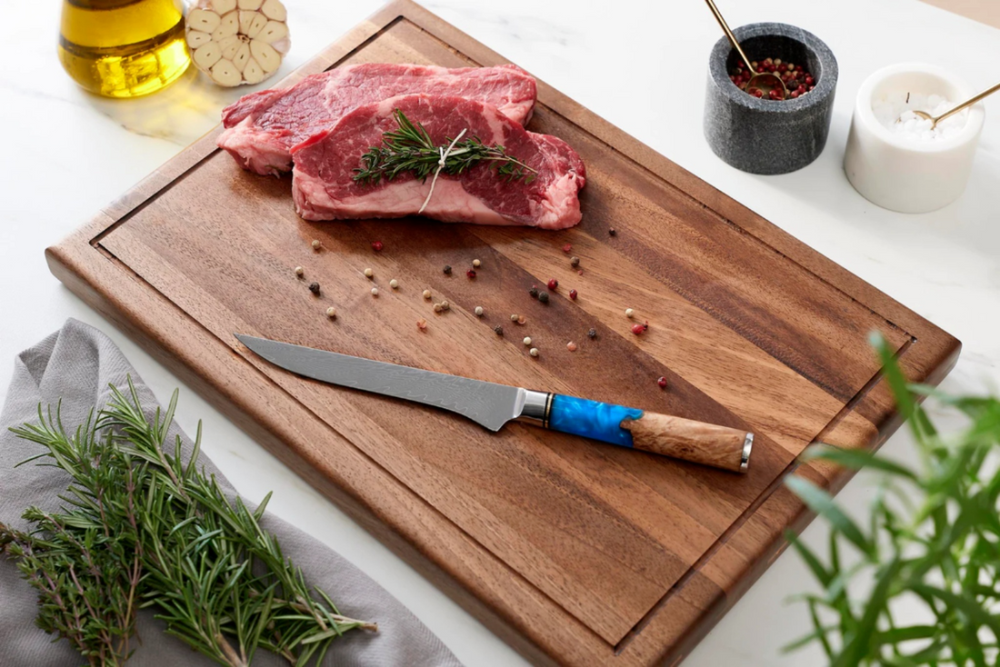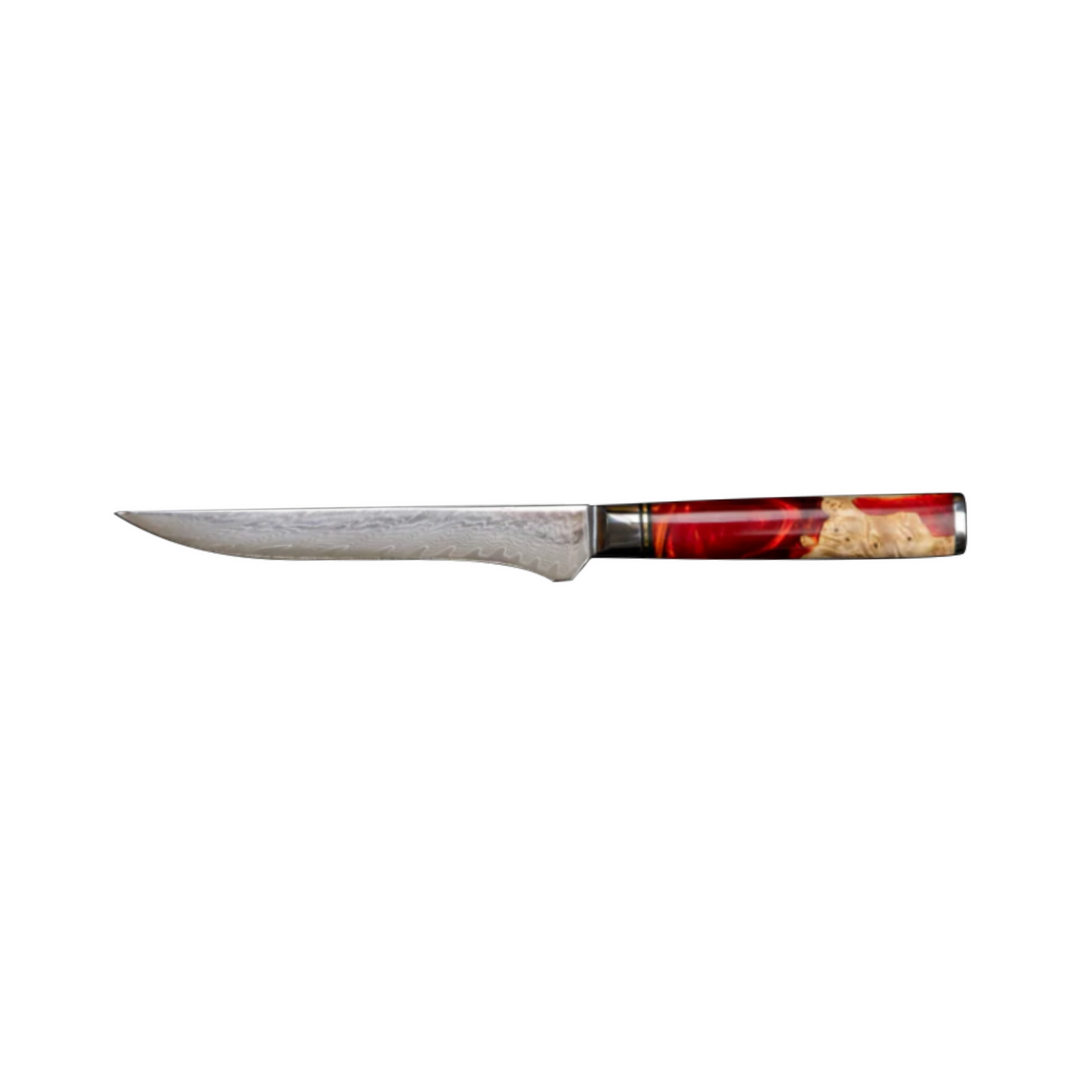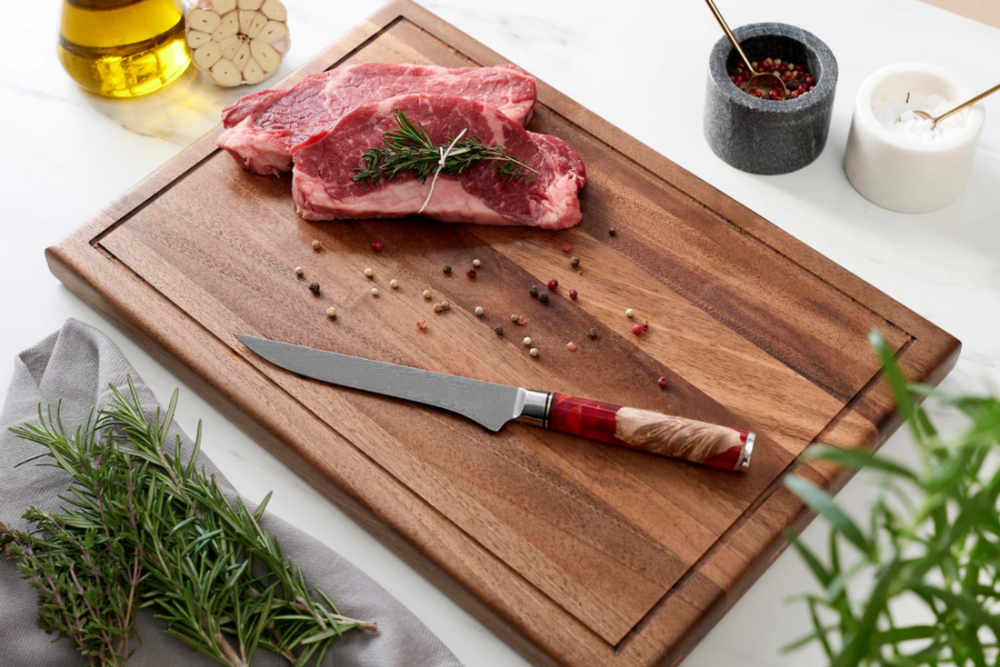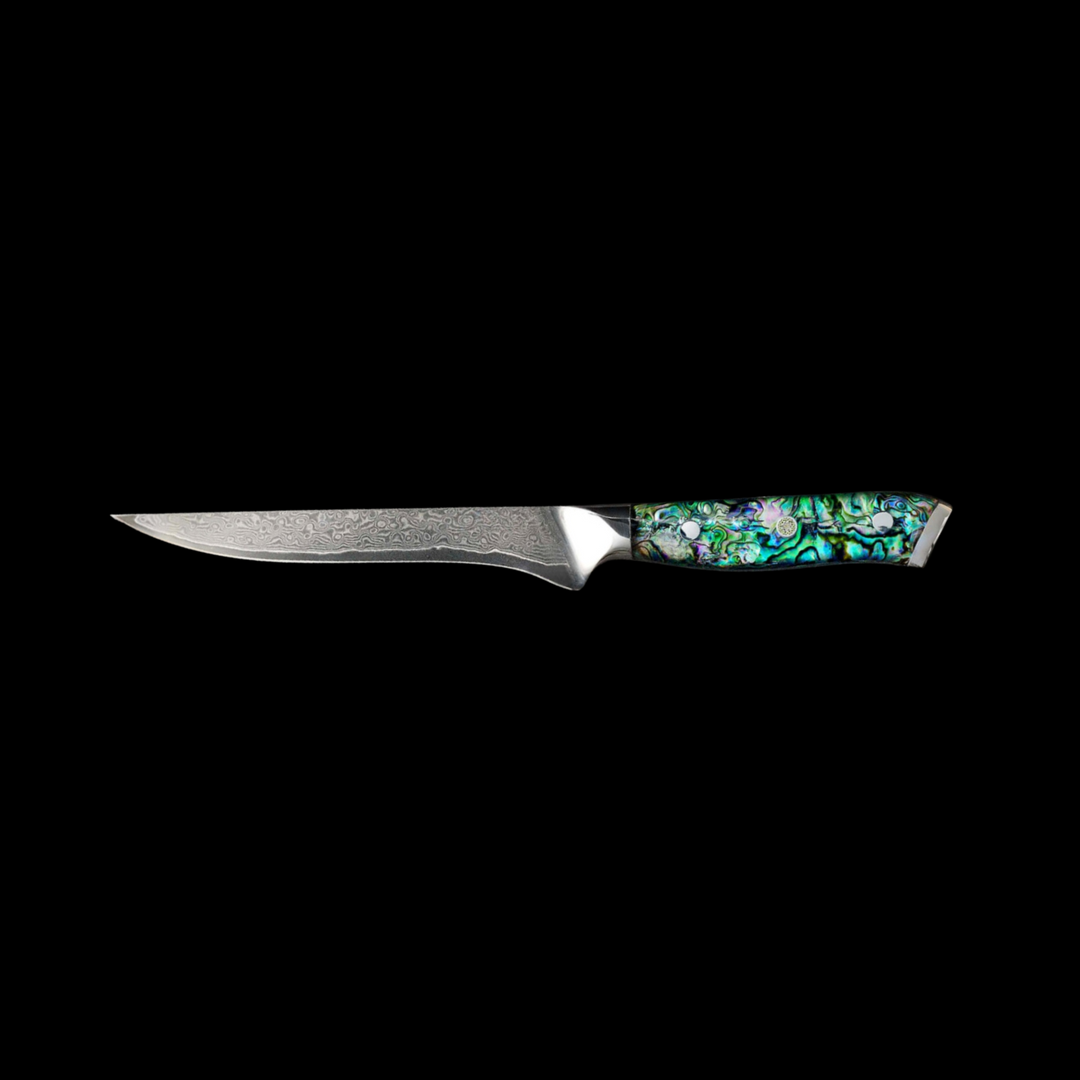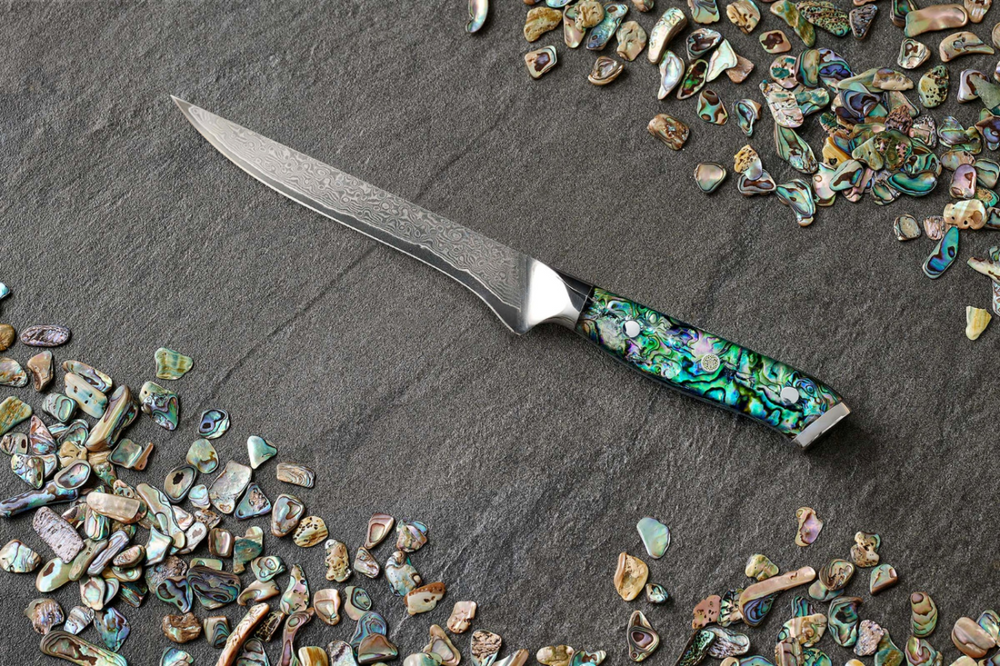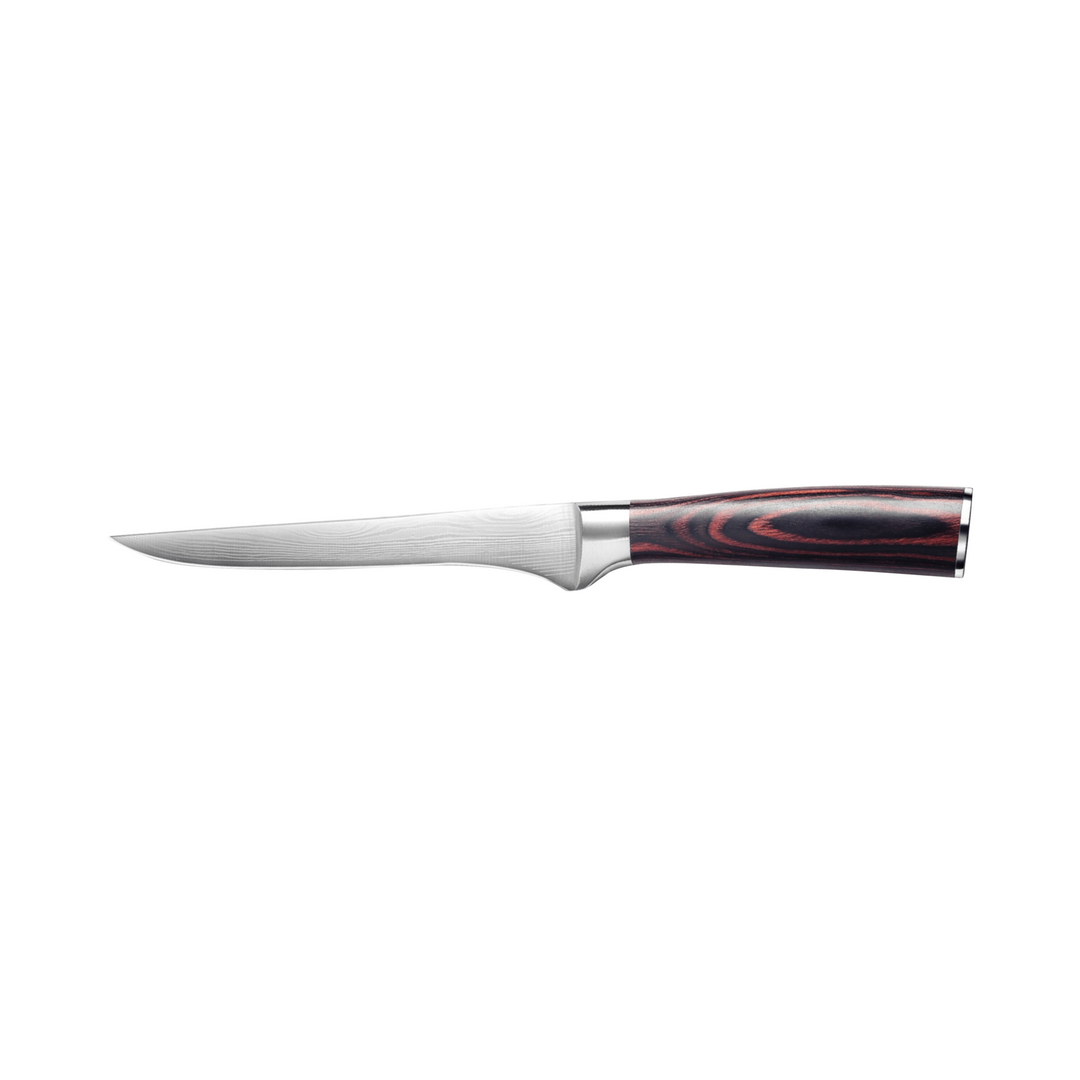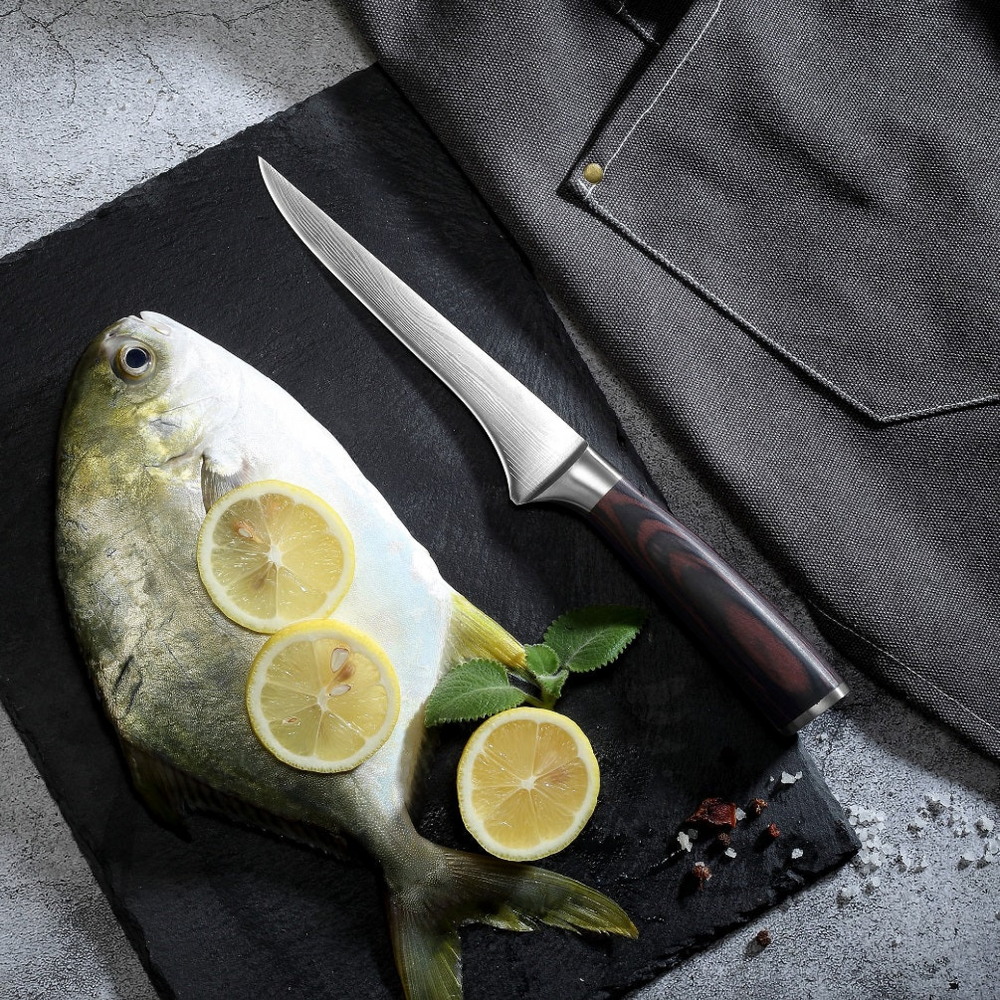BUY A DAMASCUS FILLETING KNIFE: PRECISION IN YOUR KITCHEN
As a professional or amateur chef, you understand the significance of using the right tools in the kitchen. The fillet knife stands out as a specialist tool, meticulously crafted for the precise cutting of fish and meat. Investing in such a knife can significantly ease your kitchen tasks. At Nakama, you can purchase high-quality filleting knives with engraving.
WHAT IS A FILLET KNIFE?
The fillet knife, also known as a filleting knife, is primarily designed for the delicate task of filleting meat and fish. It features a long and narrow blade, perfect for separating fillets from the flesh of various animals, including poultry, game, or fish. This knife excels in precisely removing inedible or unwanted parts, ensuring your culinary creations are free from tendons, bones, or cartilage.
BUY A CHEAP FILLETING KNIFE VS. A HIGH-QUALITY FILLETING KNIFE
When considering a filleting knife purchase, several factors should be taken into account:
- Blade sharpness: Nakama filleting knives boast exceptional sharpness with a sharpening angles of 8-15°.
- Sharpness retention: The Damascus steel core ensures prolonged sharpness compared to conventional knives.
- Longevity: With proper care, a Nakama filleting knife becomes a lifelong kitchen companion.
- Handle: The handle's shape is critical for filleting knives, whether made of wood or other materials.
- Protection: Finger guard protection prevents accidental slips into the blade.
Nakama filleting knives excel in all aspects and are perfectly tailored to meet kitchen needs. However, other knives may be more suitable for butcher shop environments.
THAT'S WHY IT'S WORTH BUYING A GOOD FILLETING KNIFE
Investing in a high-quality filleting knife is worthwhile if you already own a chef's knife or Santoku. A superior filleting knife simplifies the most challenging tasks involving fish and meat, offering precise blade guidance and excellent sharpness. Additionally, it minimizes waste, ensuring you make the most out of your ingredients.
FILLETING KNIFE: RIGID OR FLEXIBLE?
In essence, a flexible blade is suitable for filleting fish, while a rigid blade is preferable for boning and filleting meat. Nakama prioritizes durable Damascus steel, less flexible but boasting prolonged sharpness.
WHAT DO YOU USE A FILLET KNIFE FOR?
A fillet knife serves various purposes:
Filleting fish: Perfect for skinning and deboning fish, offering anglers precision in gutting and filleting their catch.
Filleting meat: Ideal for removing skin, tendons, and fat, as well as separating meat from bones, catering to both hunters and chefs alike.
Filleting fruit and vegetables: The precise blade effortlessly handles peeling and cutting tasks, whether peeling oranges or trimming broccoli stems.
CARE FOR FILLET KNIVES PROPERLY
Caring for a filleting knife is akin to caring for other high-quality knives. Here are some essential tips:
CLEANING A FILLET KNIFE IN 3 STEPS
Given its contact with raw meat or fish, thorough cleaning is essential for long-term durability and hygiene:
Wash off with a drop of soap: Use gentle soap to protect the blade, especially with Damascus steel.
Dry: Prevent rust formation by thoroughly drying the knife after cleaning.
Apply a thin protective layer of oil: Preserve the blade and handle, and prevent food from sticking by applying camellia oil.
SHARPENING FILLET KNIVES: TIPS AND TRICKS
Sharpening a fillet knife, particularly its inward-bent blade, can be challenging. However, with practice and the right tools, achieving a sharp edge is feasible. Using a sharpening rod is a great option.
STORAGE
Proper storage is crucial for maintaining the sharpness of a filleting knife. We recommend using knife blocks.
ADVANTAGES OF NAKAMA FILLETING KNIVES MADE OF DAMASCUS
Nakama knives boast unique handles and high-quality Damascus blades. Personalize your filleting knife with engraving and present it in a gift box for a truly memorable gift. Order your Nakama filleting knife online today!




